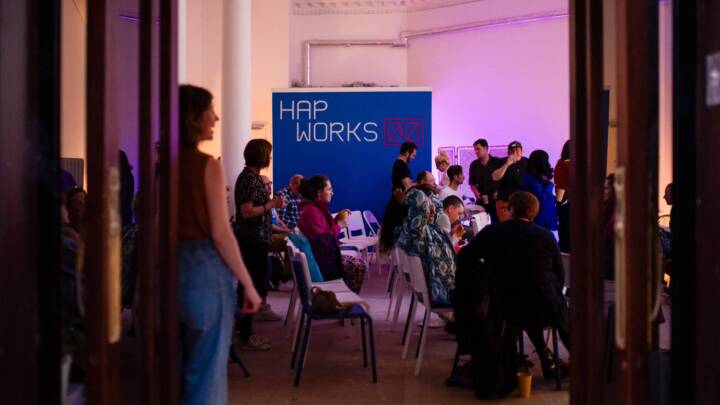Four artists explored the barriers within the Creative Industries in Dundee through research and an artistic response, presented here.
Kaya Fraser’s researched the literacy inequalities and boundaries that Dundee’s working-class communities face in general and when accessing the creative industries. Scotland had the highest rate of adult literacy problems in the whole of the UK with 1 in 4 adults struggling in someway related to their lack literacy skills, the implications of this work are significant when it comes to access to art both from the perspective of makers and the audiences themselves.
In her own words: “For the moving image work, I used a lot of my own experience of problems reading and writing to convey what these challenges feel like. I have a neurological learning difficulty and whilst this type of barrier has no prejudice to who gets it, there are barriers that working-class communities face through higher levels of late or no diagnosing to get help to live with these conditions. Most people, as I did, ignore and avoid reading where possible. I wanted to make the moving image represent the awkwardness and discomfort of how it feels to read or try to read words as they appear to those experiencing such challenges. I found that these problems were intensified when trying to navigate new places of interest, like art galleries. A whole other literacy world to shuffle around, art literacy.“
You can watch the video at the top of this page. In this project, Kaya also developed a print series, 1 = most deprived: “I found myself yet again looking over the Scottish Index for Multiple Deprivation (SIMD). This website provides a ‘1 – 10’ rated compilation of data for each area in a town or city. Being fascinated by maps these maps intrigue me, so I followed the information collected for Dundee’s twelve areas hardest hit by education inequalities, considering these places would also be the hardest hit by literacy challenges.
“The twelve locations in Dundee were also rated ‘1/most deprived’ in almost every other category and this information left me feeling further detached from the places before I had even set foot in them. I scouted for a single image in each location restricting myself as a photographer, each image documenting a physical barrier in the shot […] These black and white analogue photos were used in the riso prints along with the corresponding ‘data zone marker’ that you find on the SIMD maps. These prints turn the order that you receive the information in on its head, and in the correct order (in my opinion), first the visual documentation, then to the overload of data that stipulates an area’s deprivation full of detachment“







Photographed by David P Scott.
On The Full Picture Project, Kaya explains: “I left the comfort zone of a recurrent theme in my practice, the theme of ‘home’. The processes however did not change, just the place itself. Having never lived in Dundee, it was at first scary to develop my process in a place I have very new memories of. But the personal to collective shared experience approach I often use was still applicable and this has taught me a lot about my practice and how I can adapt my familiarity to approach new ideas. I have a new-found confidence in how to restructure all that I know.”
You can follow Kaya’s work on @theeverydayarchivist and find out more about the other artists here.



